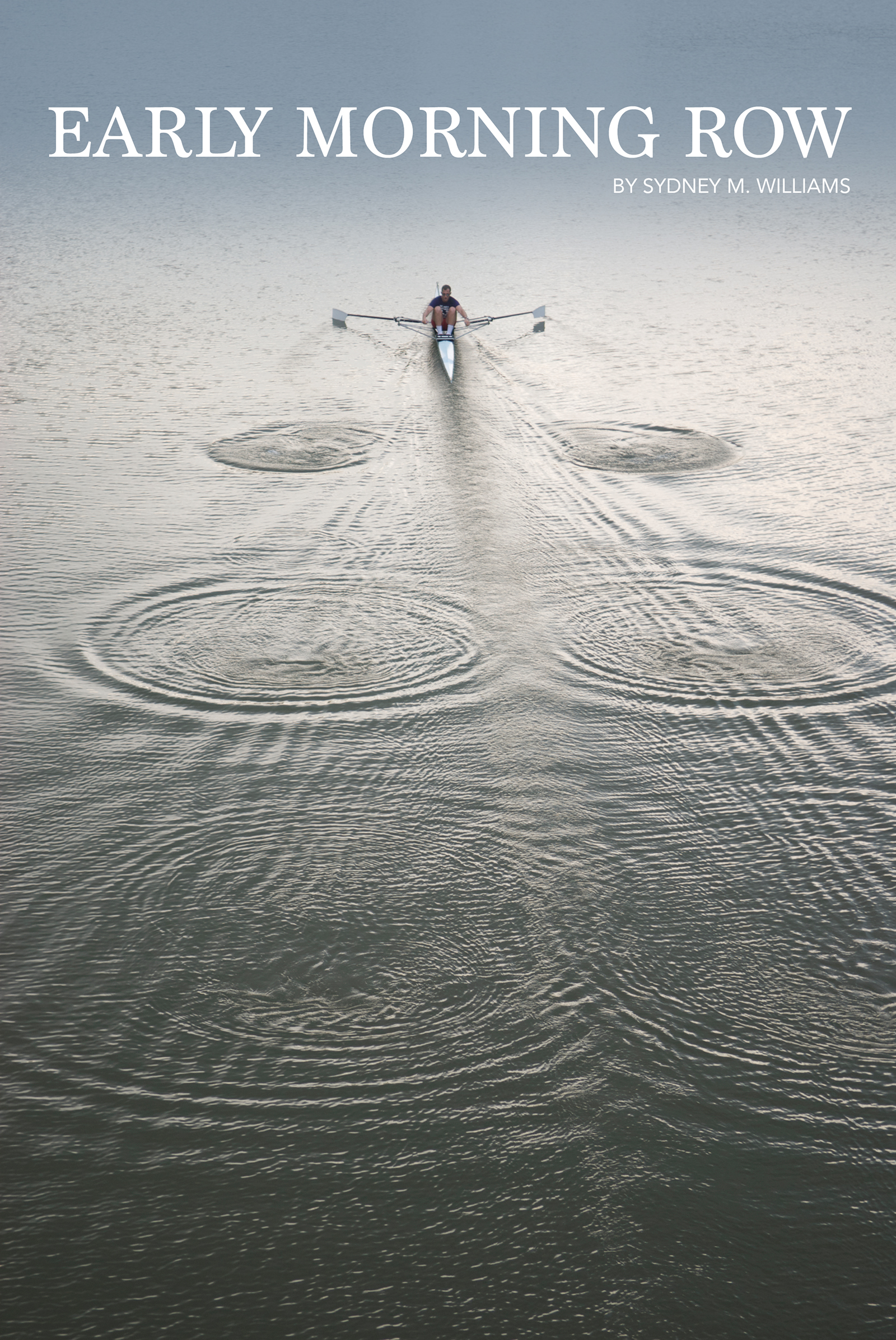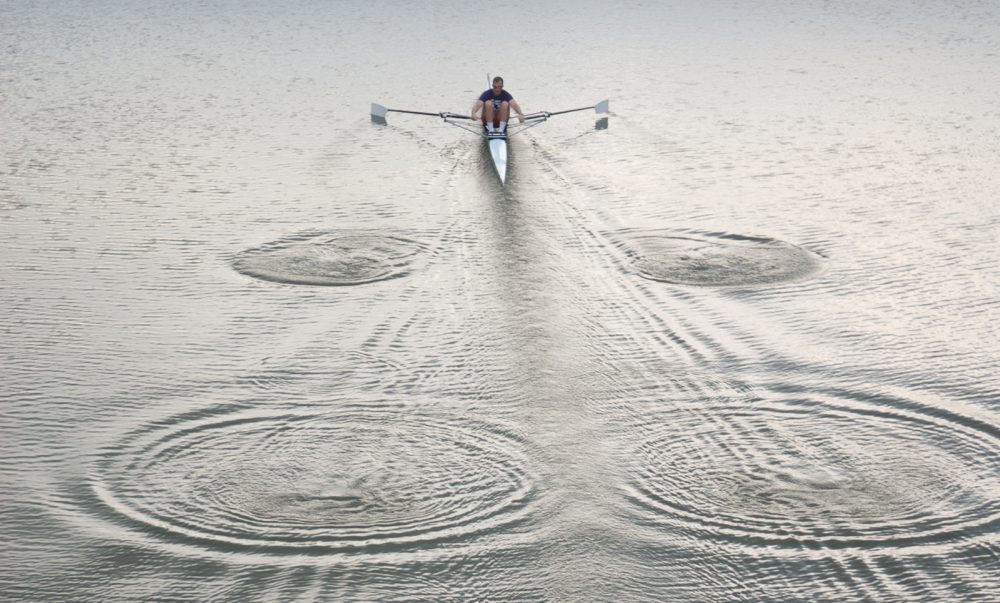
Image Credit: Getty Images, PeskyMonkey
The best time to row is early in the morning when the water is quiet and the only people on the river are morning fishermen and crabbers. I usually head out about 6 a.m., departing from a dock on the Duck River, a tidal creek on the east bank, about three miles up from the mouth of the Connecticut River in Old Lyme. Today, as I walk toward the water, our sheep look up from their breakfast grazing. Crows call out across the fields with their high-pitched short screams of irritation, and overhead a few seagulls wheel in the air. But the osprey nests on platforms set out above the reeds are now largely empty, their occupants having retreated to warmer climates.
I walk over a catwalk and then a narrow, mowed field to where my scull sits upon its rack. Lifting the boat, it rests easily on my head, the 27-foot length belying its 38 pounds. At the beam, the scull is a mere 18 inches, but its outriggers provide an over-all width of 6 ½ feet. I carry the scull across the second catwalk to the small dock, which being low in the water, is perfect for launching an equally low-in-the-water boat. Having placed the seat in its tracks, I gingerly grasp the oars in my right hand (freeing the left to hold onto the dock should the need arise), place my right foot in front of the seat and carefully set myself down, with the gunwales only three inches from the waterline.
Sitting backward in a narrow scull, precarious in its balance, provides an interesting and all too familiar perspective from which to view the world. The past is what faces me. To see the future (and where I am headed), I must turn my head and shoulders, carefully so as not to upset the boat.
As I move away from the dock, I take quarter strokes, which gradually lengthen as I move into the current of the river until I’m at a point where I’m sliding forward. My knees come up to greet my chin, at which point the blades of the oars dig into the water, allowing me to pull on the oars while simultaneously pushing back with my legs. The boat spurts forward—or backward to the oarsman. I move upstream with the incoming tide, but against the current. Rowing across Duck Pond, I enter a canal that connects to the Lieutenant River, which at only 4 ½ miles is Connecticut’s shortest waterway. (The headwaters are a marsh area fed by a stream called Mill Brook and made famous by Roger Tory Peterson, whose home was on its western bank.)
The beauty of the environment is exceptional. The salt marshes and the creeks that drain them are filled with cattails, sedge, black grass, and the ubiquitous phragmites. Otters, raccoons, muskrats, and even mink make their homes in the banks of the river. Overhead, besides seagulls and ospreys, ducks, cormorants, plovers, marsh wrens, and swallows dip and dive. It is little wonder that The Nature Conservancy has declared the tidal basin of the Connecticut River one of the last Forty Great Places in the Western Hemisphere.
My focus, alas, is staying upright and powering the scull forward. But as the tempo smooths and I begin to relax, a state of quiet ecstasy embraces me. The work is monotonous in its repetition, but the delicacy of the balance keeps one alert. It is at this point that you feel a sense of oneness, of man with boat. With rhythm, my thoughts become Proustian, like those moments before falling asleep, when kaleidoscopic memories joust for attention. But I cannot ignore the precariousness of my position, seated in a narrow rowing shell easily upset, and I am brought back to reality.
Sliding forward, the blades feather backwards across the water until the catch is reached, at which point the blades are given a half turn and dropped into the water; I then push off with my legs while simultaneously pulling on the oars to the point of release when the blades are again raised, given a half turn and feathered back. The process is repeated. The silence of the moment is interrupted only by the calling of birds and the splash of water against the edges of the scull. My course takes me under a railroad bridge and two highway bridges. I row past the village of Old Lyme with its picturesque homes, past the Florence Griswold Museum where Connecticut impressionists were painting 100 years ago, until I reach a point where the river widens, before disappearing into the marsh; turning around, I row home.
An hour after leaving the dock, I return from whence I came, this time watching what had been the future recede into the past. The rising sun has warmed the air and swept away the morning mist. Walking back to the house, glad to be again facing forward, I feel a satisfaction brought about by intense exercise while communing with the natural world that surrounds me.

